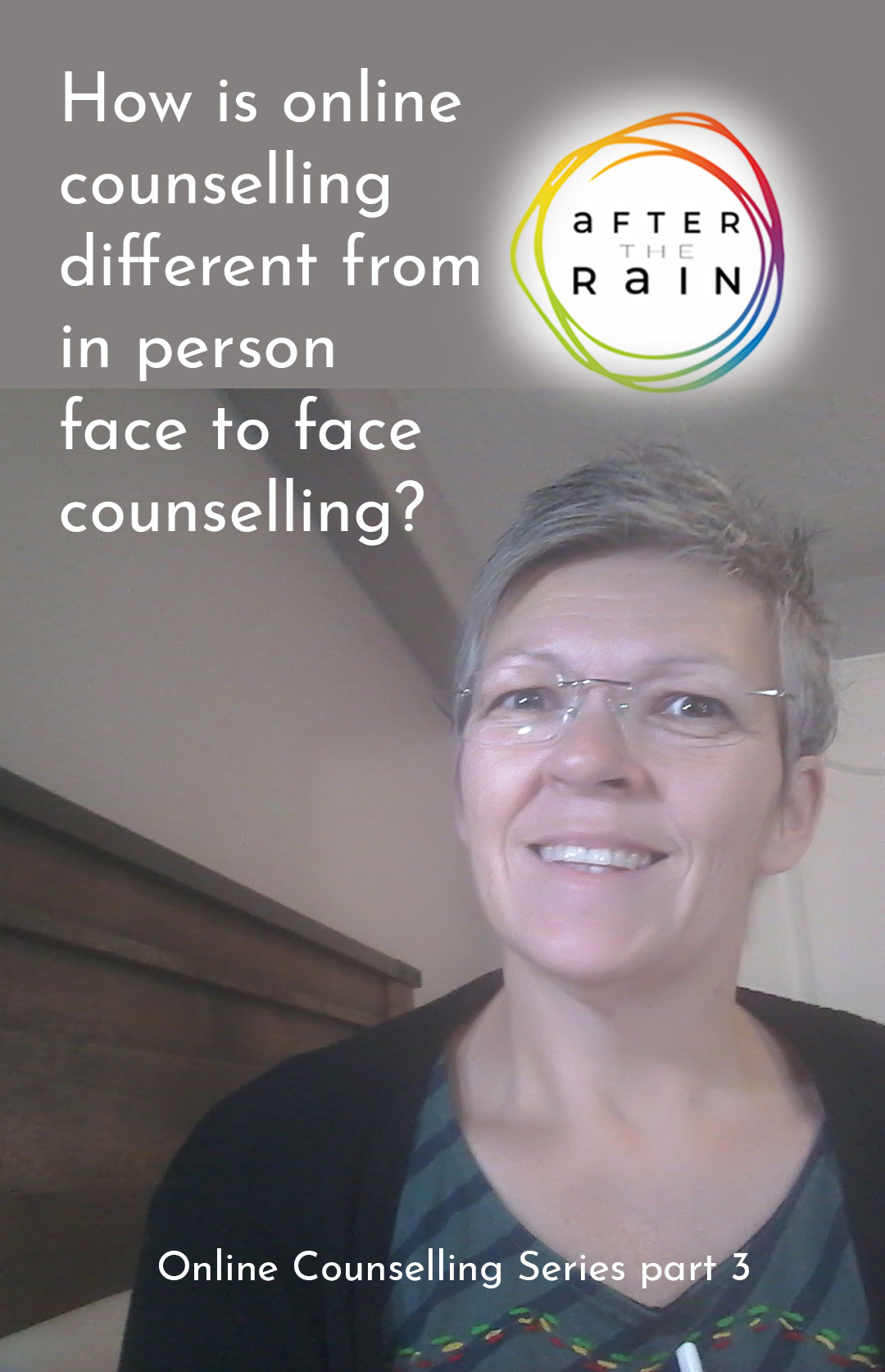We are in different locations
As you know, online counselling is counselling that is provided when the counsellor and client are not located in the same room together at the same time, which is the normal way that counselling would occur. They may be in different buildings, different cities, even different countries. For the purposes of this blog we will be talking about counselling using video so the counsellor and client can both see and hear one another, although there are many times when there is only voice contact or even just text contact. It is my personal preference to use video, so that I can see and hear my client, including a lot of non-verbal communication, tone of voice, pauses and intonation as well as seeing facial expressions.
Some non-verbal communication is lost
One of the obvious differences is what I can and can’t see in the video. I can see your face, just like I would if we were in person. I can see if you are crying, just like I would if we were in person. I can see if you are caught up in thinking, just like I would if we were in person. I can hear if you are getting emotional, just like I would if we were in person. I can see and hear if you are getting angry or upset, just like I would if we were in person. I can see if you are happy or sad, just like I would if we were in person.
I might not see all the non-verbal communication such as clenched fists, shaking or tapping feet or legs, tightly held body or shaking hands that I would probably notice if we were in person. But I might see clues of those things, and I will likely ask you about them, as a way of overcoming the loss of information. That is part of my job and, I consider, my expertise, to be able to ask about those things in a tactful and helpful way. It’s something I discuss with clients in our first session.
Slight increase in potential for misunderstanding
Another way online counselling is different from in person, is that with limits on our non-verbal communication and potential for reduced visibility/sound when the technology is less than optimal, there might be more chance for misunderstanding. Misunderstanding can, of course, happen in person as well, but chances are slightly higher when there is tech involved. This is also something I discuss in the first session. I invite clients to bring up any concerns in this area and I warn them that I might ask more pointed and direct questions to be sure we are on the same page, than I might need to do if we were meeting in person.
Technology can fail us
Another difference is the reliance we have on technology. While we do all we can to have reliable technology and internet, it is out of our control and the laptop, phone, internet or even power, can stop working without notice at any time. You generally don’t have to worry about those things when you are meeting in person. Although fire alarms and police emergencies could have a similar effect even in a traditional counselling situation. In my first session I will talk through this with a client and we will have plan B, C and more for if we lose contact.
Greater need for emergency contacts
For safety purposes I will also discuss with a client who I can contact should the worst happen and you need physical help while we are talking – what would I do if you had a heart attack while we were talking, or if you were in a very vulnerable state and we lost contact. You could have an emergency while we are both in the room together, and I might need to call emergency services, or your emergency contact. It is my job to consider how this is different if I am in another city when this happens. One of the ways I minimise this concern is to get 2 emergency contacts from my clients, just in case.
Is your location appropriate?
One last way that online counselling is different, is that you need to consider where you will be with we meet. If we meet in person, it is my job to have a comfortable private, place for us to meet where we will not be interrupted or overheard. I take care of it being warm or cool enough, that chairs are situated so we can see each other comfortably, make sure the sun isn’t shining in your eyes – that sort of thing. When we meet online, you need to take care of those. We can negotiate the position of your device, and I will ask about who might be in the house with you and if that will affect your ability to focus and fully open up to me
Those are the main differences I can think of between meeting in person and online: minimal loss of nonverbal communication, increased chance of misunderstanding, potential for loss of technology, increased need to consider safety protocols, and the circumstances at your location. Other than those, I consider online counselling to be virtually the same as counselling in person.

